Higher education marketing trends are changing so quickly, it can be tough to keep up. Growing levels of student debt and changing attitudes about the value of a college education have contributed to declining enrollment numbers over the past decade, making it more crucial than ever to communicate the tangible value of a college degree. Add that to constantly shifting trends in technology use among potential students (hello, TikTok) and the long-lasting impact of the COVID-19 pandemic, and you’ve got a recipe for marketing confusion.
As a digital marketing strategist for both online and in-person colleges and universities, I’ve had an exciting year with some big wins and a lot of learning experiences. I wanted to take stock of the higher education marketing trends I see sticking around for the long-term, as well as a few new developments I see coming over the horizon.
So without further ado, here are the top 16 trends college marketers should be paying attention to in 2025:
- Authentic Higher Education Branding
- Personalized Marketing Communications
- Social Media Engagement
- Micro-Influencer Marketing
- Student-centric, User-generated Content (UGC)
- Student Success Stories
- Short-form Video
- Mobile-first Design
- Chatbots
- Email Marketing Automation
- Streaming Platforms and Over-the-top (OTT) Advertising
- Tracking and Nurturing Online Leads
- Improving Conversions
- Using SEO and PPC in Tandem
- Artificial Intelligence (AI) and Augmented Reality (AR)
- Cross-channel and Omnichannel Marketing
Trend #1: Authentic Higher Education Branding
If you’re paying attention to college marketing trends, you’ve probably seen one word come up again and again: Authenticity. It’s worth taking a moment to unpack what we mean by “authentic branding,” and why it’s important to today’s prospective students.
College marketers already know that their school’s brand, or reputation, is important to students in making enrollment decisions. But whereas previous generations were limited to factors like rankings and prestige in determining reputation, today’s prospective students have access to a much broader pool of information, mostly on social media. That means you can’t fake it — and Gen Z is particularly well-known for being quick to sniff out brand phoniness.
By building a brand around your college or university’s unique strengths, you’ll be much more likely to attract right-fit students and boost your enrollment rates.
Trend #2: Personalized Marketing Communications
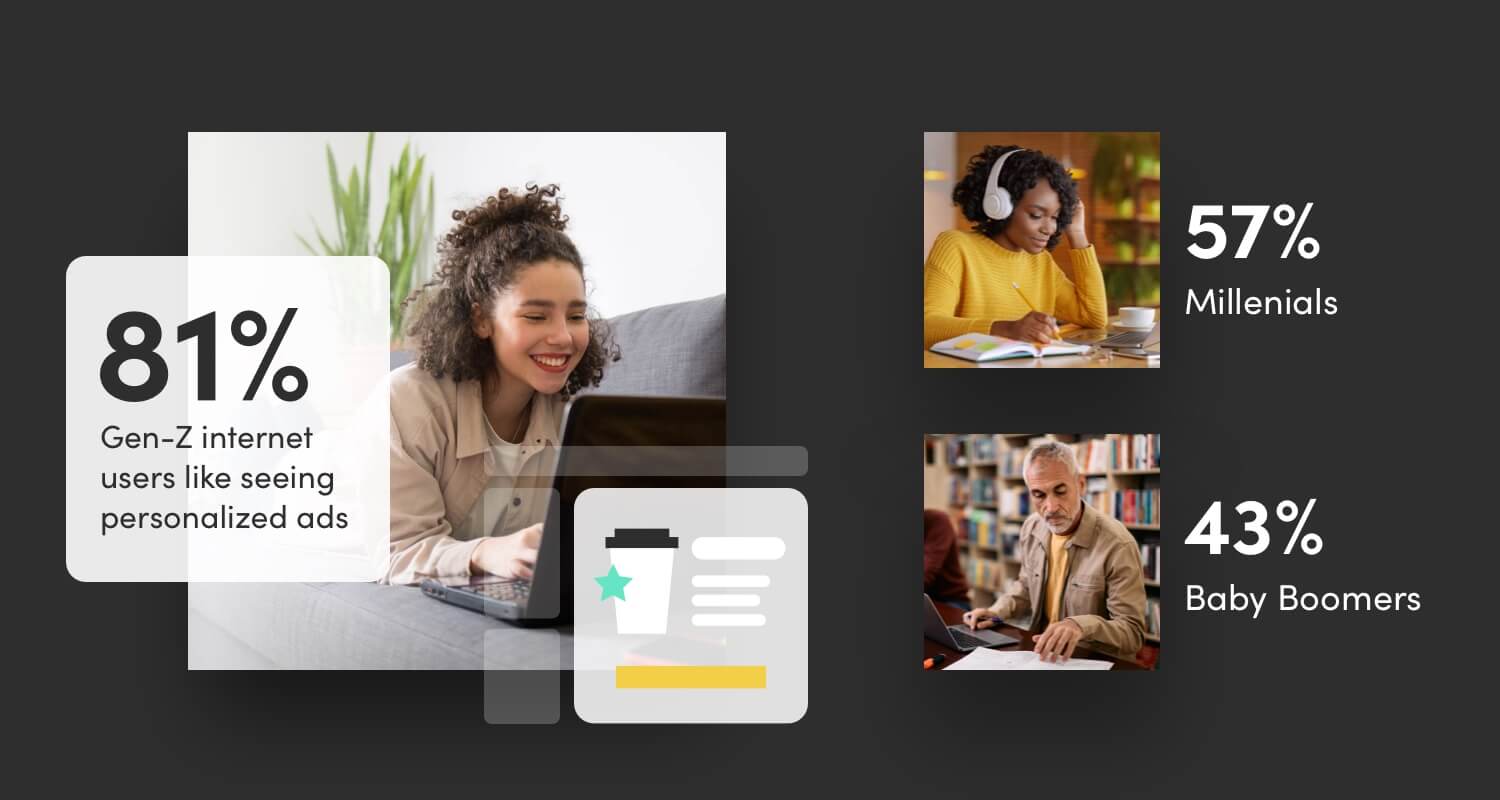
Want to attract more Gen Z students? Get personal. According to a study by Unsupervised, a market research company that leverages artificial intelligence to determine trends, 81% of Gen Z internet users say they like personalized ads. That compares to only 57% of millennials and 43% of baby boomers.
Keep in mind that today’s prospective students compare dozens of colleges. They’re unlikely to immediately click the “enroll today” button, no matter how prominently it’s placed on the university homepage. As they explore their options, you can stand out and encourage enrollment by nurturing personal communication and showcasing a memorable brand identity.
How do you do this? A good place to start is creating buyer personas for your ideal students. Let’s consider three majors: criminal justice, education, and cybersecurity. Those majors are targeting three very different prospective students with very different goals and motivations.
Take the time to create the “ideal” student for each major so that you can dive into their unique characteristics and nuances to better understand their motivations and goals.
After you’ve gathered insight from your personas, ask “What jobs are hiring graduates of these programs?” And in turn, “What topics should we cover to educate students about their opportunities?” Use this proactive approach to guide your content strategy. When prospective students find a video or other resource on your website that answers their questions, it establishes trust in your institution.
Trend #3: Social Media Engagement
According to Hootsuite, 95% of people ages 13-17 use YouTube, while 67% are on TikTok and 62% use Instagram. If your school doesn’t know how to engage on those platforms, you risk getting left behind.
Here’s the trick — just like with your school’s brand, you need to figure out how to engage on social in an authentic, natural way that doesn’t feel like “advertising.” User-generated content is a great way to bridge that gap.
For example, for students hoping to live on campus, fit is a big factor. On-campus visits often feel rehearsed. Prospective students want to envision hanging out in a dorm room with their friends, watching a game at the stadium, or grabbing a coffee at the campus library. Consider employing more creative initiatives, like a student social media takeover (pre-recorded and approved prior to publishing, of course) to showcase some of these more intimate moments of campus life.
Trend #4: Micro-influencer Marketing
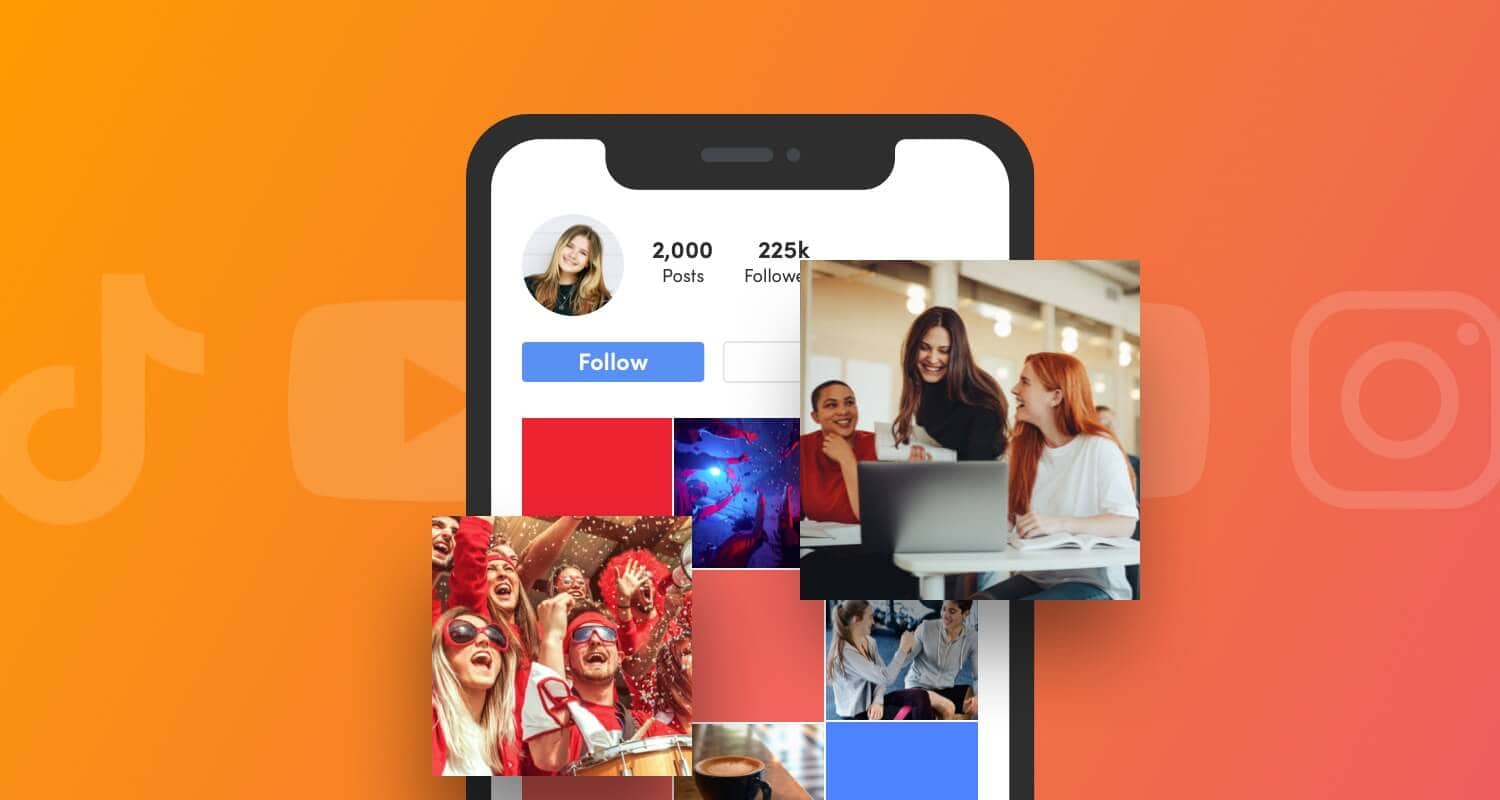
If you’ve ever seen a college use a famous alum in a marketing campaign, that’s influencer marketing. The good news is that you don’t need celebrities in your grad pool to make the most of today’s trends in influencer marketing. In fact, brands of all types (colleges included) are finding that today’s audiences want less celebrity content and more authentic content from real people.
More good news? Your school is already full of micro-influencers. Just like prospective Gen Z students, your existing students are likely heavily active on social media. Whether you know it or not, organic “micro-influence” is happening already, when potential students search for college-related content on TikTok or YouTube.
Your college can get in on this trend by identifying students who are doing a great job representing their school on social media and creating partnerships to boost their content through on webpages and in ads.
Trend #5: Student-centric, User-generated Content
We touched on this above, but social media isn’t the only way to curate and activate user-generated content (UGC) to market your university. Student ambassadors, and even faculty and staff members, can create genuine, slice-of-life photos, videos, blog posts, and more, to support virtually limitless marketing efforts.
Once you have a stream of UGC flowing, get creative with how you use it. An Instagram feed on your college website? Replacing some of the professionally produced photos in your marketing with UGC? Creating a section of your blog for user-generated posts? Those are just a few of the ways we’ve seen colleges get in front of the UGC marketing trend.
Trend #6: Student Success Stories
What better way to demonstrate the value of a degree from your school than real student success stories? According to the National Association for College Admission Counseling’s Journal of College Admission, Generation Z students are “entrepreneurial, desire practical skills with their education, and are concerned about the cost of college.”
So, give them proof that they’ll get job skills that will justify the cost of attending your school through student success stories. To take advantage of this higher education marketing trend, avoid the impulse to go full-on Hollywood production-level with your success stories. Instead, keep in mind that the stories should be authentic and personal. This is another great opportunity to leverage both UGC and personalized marketing trends.
Trend #7: Short-form Video
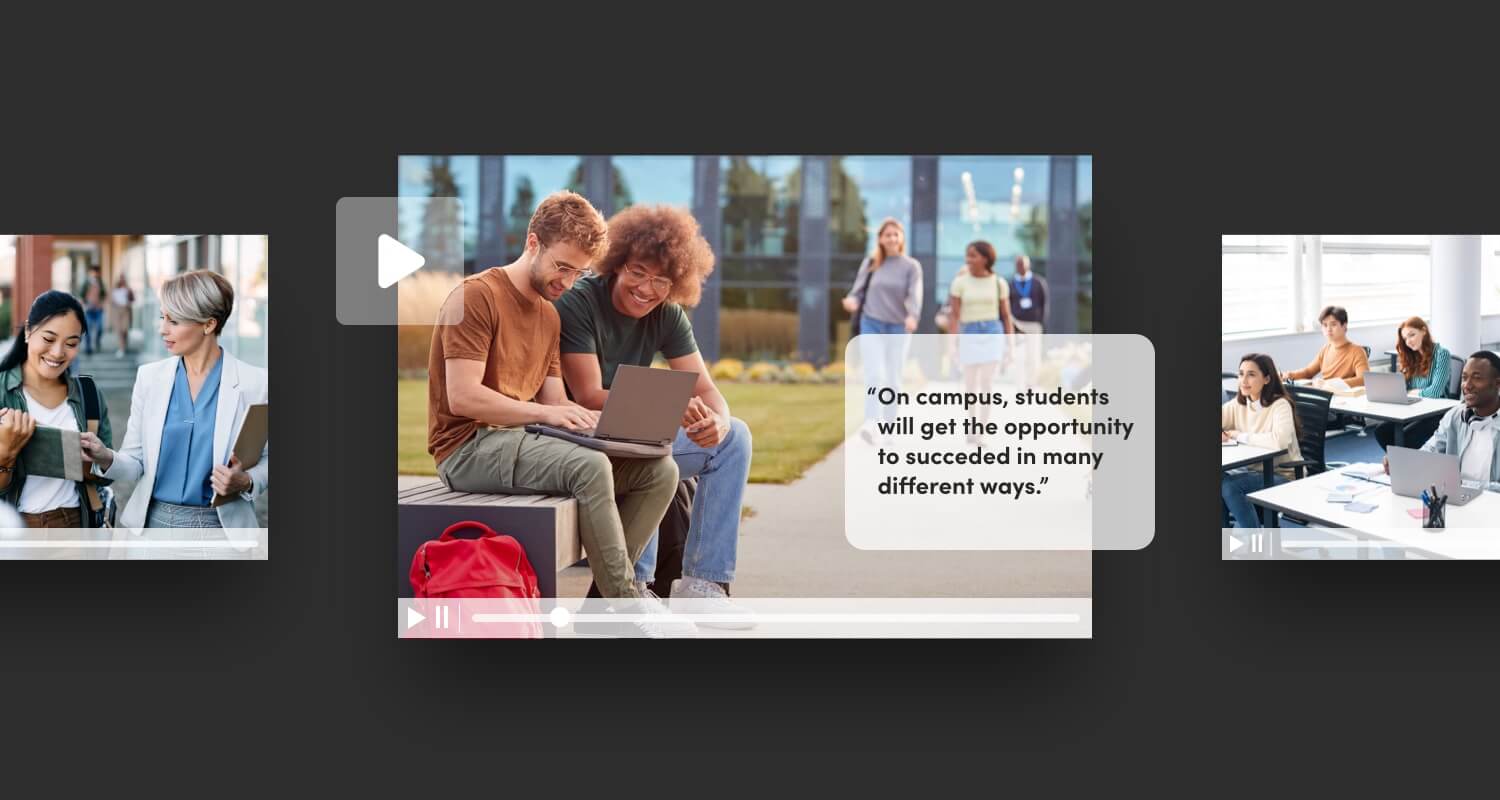
In addition to capturing footage of day-to-day campus life, interviewing students about various majors, sports, and clubs breathes life into your school’s online presence. More importantly, it helps prospective students determine whether or not your college is the right culture fit.
Not to mention, incorporating video on a landing page could help increase conversions by more than 80%. Watching a video increases time on page, which helps your website ranking and gives the user time to absorb other content on your page.
When thinking about what types of video to use in your marketing, keep in mind that the trend is away from lengthy explainers, and toward snackable, short-form video. Data from Statista shows that 61% of Gen Z and millennial viewers prefer watching videos under one minute long.
Trend #8: Mobile-first Design
We will be the first to admit that mobile internet use among high school and college students isn’t exactly a new trend. But it’s important enough that we continue to emphasize mobile-first design for college marketers.
According to Hootsuite, 95% of American teens ages 13-17 have a smartphone. That’s up 30% from only 73% of smartphone-owning teens in 2015. You can bet that tomorrow’s students are using their phones to conduct their college searches, and if your website and other digital marketing assets aren’t mobile-friendly, you’re at a huge disadvantage.
In addition, now that Google has moved toward mobile-first indexing, your website must be optimized for cell phone scrolling or your ranking will suffer. With the rising popularity of voice-search functionality in devices like Alexa and Siri, don’t forget to consider voice search optimization to increase usability and accessibility.
Trend #9: Chatbots
As capabilities increase, accessibility is starting to mean being available whenever and however your audience needs you.
Do any of your programs target working professionals making a career move? Live chat may not be feasible at 11 PM on a Saturday night. But that’s when your target audience is probably surfing. From a conversion standpoint, you still need to deliver answers to their questions.
Virtual chat assistants, or “chatbots,” are gaining traction; in the last three years, customer service chatbot use has increased by a mind-blowing 92%. They’re quickly becoming table stakes for university websites. As a student compares five different colleges, quick answers to their questions from your website could be the difference between making it to their short list or not.
Trend #10: Email Marketing Automation
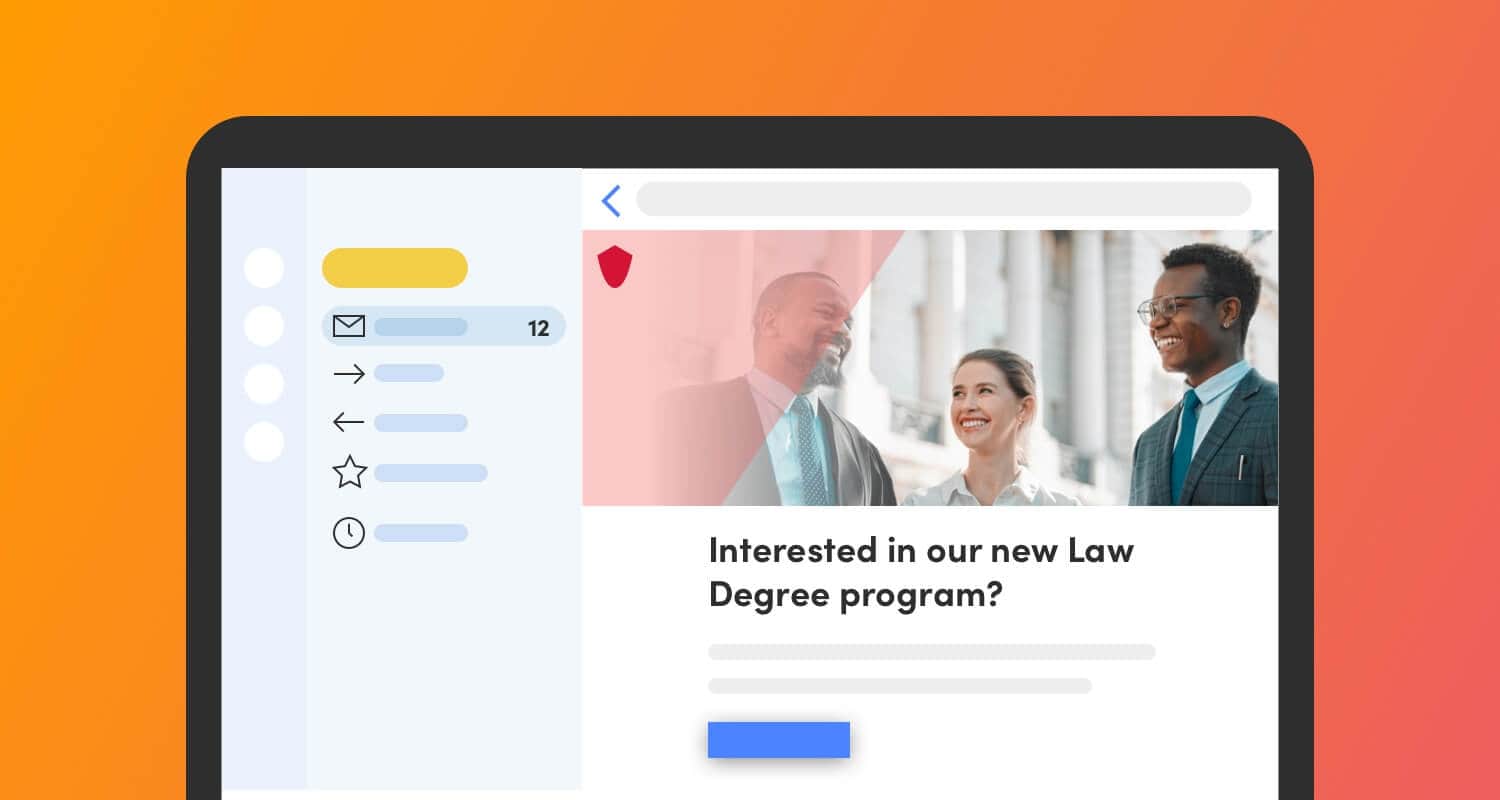
Lead nurture emails help naturally guide prospective students through their decision-making process. The user browsing sororities and fraternities has a very different mindset than a current criminology major clicking through graduate school course offerings. Naturally, they shouldn’t receive the same emails.
As part of your content strategy, you can set up automatic email drip campaigns that students enter when they convert on a specified action. For example, if a student downloads a free guide on “9 Ways a Master’s Degree Improves Your Criminal Justice Career,” you already know that student is focused and interested in higher education. Could your program be the right fit? This is your chance to show them that it is through supplementary materials.
That first download could trigger additional content that you’ve strategically planned to position the program attractively and guide them toward the next step in the funnel. Maybe it starts with a virtual Q&A with a recent graduate, progresses to a webinar information session with one of the senior faculty members, and then ends with the option to speak with an enrollment advisor.
Trend #11: Streaming Platforms and Over-the-top (OTT) Advertising
Keep meeting your prospective students where they are. By 2030, Gen Z will make up 30% of the U.S. workforce, and they’re the first generation to be considered digital natives. As they become the new target audience, colleges and universities need to rise to the challenge. And that means reinventing your communication strategy to suit this upcoming generation and their tech-savviness.
According to the LA Times, Gen Z spends an average of 7.2 hours a day on their phones. Wouldn’t it be effective for your institution to join the conversation? By leveraging text message/SMS reminders, your college or university has an opportunity to reach students in a way that feels familiar and showcases your relevance.
Streaming is becoming more and more popular. In fact, 73% of Gen Z viewers stream TV shows. What does that have to do with higher education marketing? It’s an opportunity to leverage over-the-top (OTT) advertising, commercials strictly created for and distributed on streaming services. Since cable is on the decline, this promotional method provides a unique opportunity to reach students on their preferred platform.
Trend # 12: Tracking and Nurturing Online Leads
Lead generation is fairly straightforward. You’re trying to attract prospective students to your program and encourage them to enroll.
HubSpot writes, “In most cases only a relatively small percentage of your inbound leads will be ready to make an immediate purchase, leaving upwards of 90% of your inbound leads on the table.” Don’t worry, you can speak to the other 90%, too. This process just takes a little more time, so that’s why we need the word nurture.
The email marketing automation that we discussed earlier is just one example of nurturing a lead. Not only will you improve user experience, but you’ll get a much higher ROI on all other marketing activities if you build your funnel to meet people where they’re at in their buyer’s journey.
This journey isn’t restricted to email marketing. For example, if a prospective student visited your site and chatted with a chatbot, then the next time they visit, the chatbot should say “welcome back” and offer additional material to progress their decision making.
Trend #13: Improving Conversions
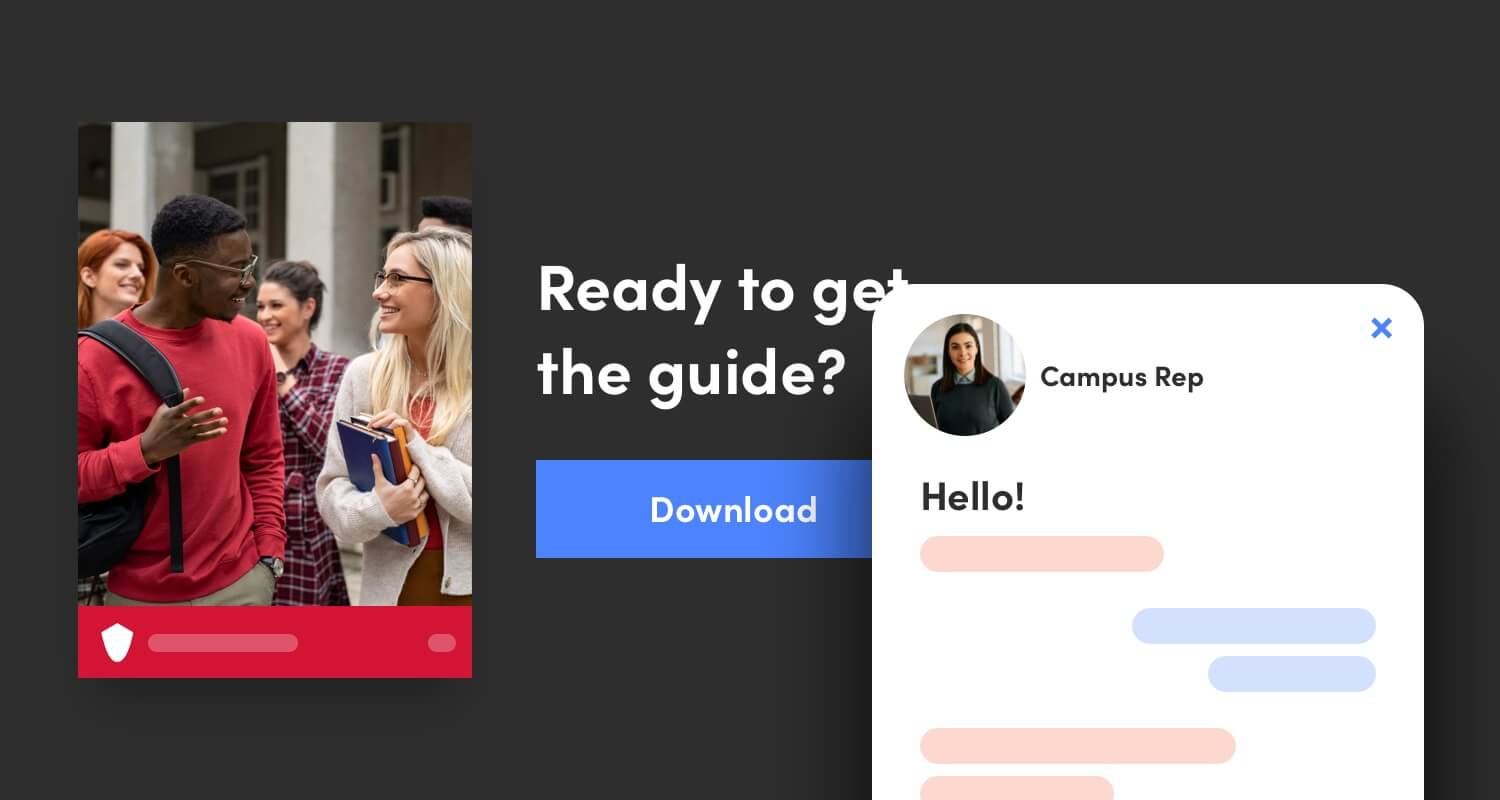
A conversion simply means that a user visited your site and completed a desired action. Maybe they’ve downloaded a guide or clicked a button to speak with an enrollment advisor. The more conversions your website has, the more engaged your users are, which ultimately increases your ranking and helps boost enrollment.
For conversion rate optimization (CRO), first, you need a goal to measure against. Perhaps you want 10 downloads on your newest content offer. Once you set a benchmark, you need to test different headlines and CTAs through A/B testing to help achieve that goal.
Consider the pages that are receiving a lot of traffic. If there’s a link or downloadable content that you want them to click, but they’re leaving before they convert, reevaluate the value-add of the next step. On the other hand, if you have a piece of content with a high clickthrough rate but the page has limited traffic, consider making adjustments to increase that content’s visibility.
CRO takes a lot of troubleshooting and strategy, but its benefits are well worth the time and effort.
Trend #14: Using SEO and PPC in Tandem
Both search engine optimization (SEO) and pay-per-click (PPC) focus on keywords, but their strategies are a little different.
SEO is the organic method of increasing the quality and quantity of driving traffic to your site, which takes a lot of strategy because Google’s algorithms are constantly shifting. It’s generally thought of as a long-term strategy. The gold standard for SEO is the featured snippet. A featured snippet is when Google pulls content directly from a high-ranking page and displays it at the top of the search engine results page (SERP). Learn more about using SEO for higher ed marketing here.
Like SEO, PPC also needs to be very strategic because it’s expensive. Since you’re paying when people click your ad on search engines, the cost can range drastically. On very competitive keywords, the cost per click could be hundreds of dollars (and that’s before the conversion).
Having an expert in place with insight to help guide PPC strategy bridges an important gap because it truly influences SEO strategy. It also helps drive shorter-term results while you wait for your SEO strategy to gain momentum.
In paid, you can monitor the performance of keywords, and the gathered data is very granular. This helps determine which keywords to rank for instead of ranking and finding out that there’s a poor conversion. Paid can act as a forward scout, which is hugely influential for ROI.
Without paid, you could pick the keyword, “criminal justice degree,” but you won’t have insight to the related long-tail keywords, such as “best criminal justice degree programs” or “criminal justice degree programs in Orlando.” You won’t even know those content opportunities exist.
By incorporating a paid strategy, you can pull the “Search Terms Report,” revealing all the actual phrases that match your keyword. This uncovers patterns that would have been omitted from your initial keyword research due to low volume. But when you run it in paid, you see all the variations. This could be a springboard for additional content strategy and lead nurture campaigns.
Focusing on one strategy and not both is a huge missed opportunity based on the intertwined structure of PPC and SEO. If you’re conducting them separately, you’re getting a fraction of your potential ROI by only addressing the bottom of the funnel people who are ready to enroll.
Trend #15: Artificial Intelligence (AI) and Augmented Reality (AR)
Artificial intelligence and augmented reality are already prevalent in higher ed marketing. If your university incorporates virtual tours, you’re utilizing the capabilities of AR. Running a drip campaign is just one example of artificial intelligence. And the potential is only growing.
Staying current on newly developed tools is integral to retaining a competitive edge. Google’s Responsive Search Ads and Performance Max PPC campaigns are just two examples of AI that could enhance your digital marketing strategy.
Google’s newest development, Performance Max, dynamically creates ads using assets you provide, and serves them up to new audiences that are similar to your existing audiences in order to maximize conversions. Just imagine the possibilities of this tool combined with well-planned SEO and PPC strategies.
Trend #16: Cross-channel and Omnichannel Marketing
Universities are often structured in a way that encourages siloes; departments are siloed, and programs are siloed. Earlier, we discussed how paid advertising influences SEO strategy. That same impact exists across the board. Awareness of the different tactics in this article is only part of the battle.
Without cross measurement, universities are missing a huge opportunity. Ultimately, the best strategy is to break down marketing silos and create efficiencies across all platforms. Harnessing all of that data and using it efficiently unleashes incredible enrollment potential.
A Summary of 2023 Higher Education Marketing Trends
Marketing to potential college students in 2023 is all about empathy, authenticity, and personalization. Get to know your future student body, meet them where they are, and speak their language. To help you on your way, here are a few helpful areas to focus on:
Content Marketing
We used to think of content marketing as synonymous with blogging. Blogging is still a great tool for college marketers, but nowadays “content” has expanded to mean photos and videos as well. User-generated content is big with high school and college students, so get creative in your sourcing of content.
Personalized Marketing
To get more personal with your university’s marketing, tailor paid online ads and other content to fit the search profile of your audience.
Conversational Marketing
Get even more personal with conversational marketing. Conversational marketing for higher education means engaging one-on-one with prospective students across multiple channels. (Think live chat, chatbots, and messaging apps.)
Student-centered Content
Tomorrow’s students want content that gives them an authentic taste of what it’s like to enroll in your university. The best way to do this is through student-centered, user-generated content.
Influencer Marketing
Take full advantage of Gen Z’s heavy social media use by engaging your existing or former students (built-in influencers) to create and post content relevant to prospective students.
Cross-channel or Omnichannel Marketing
Get the most out of your content by deploying it across multiple channels. For example, a short user-generated video could be posted on multiple social media platforms, used in paid search and display ads, and in over-the-top (OTT) ads on streaming platforms.
Social Media
Connect with your future students where they spend their time on social media. For prospective undergraduates , that means TikTok and YouTube. For graduate and adult learners, LinkedIn is a great platform for marketing.
Video Marketing
Video is gold. For most applications, short-form video (under one minute) is the most popular with Gen Z viewers. FAQ videos are a great way to get started.
Virtual Events
Post-COVID, college marketers are more equipped than ever to engage with future students virtually, rather than through in-person events. This lets you reach a wider audience, unlimited by geography or time zone.
Video Campus Tours
Make video tours available on your college website and YouTube channel to allow students to get a feel for your school earlier in the decision-making journey.
Mobile-friendly Online Presence
Do a thorough audit of your college’s online presence, and make sure that every step is 100% mobile-friendly. Your goal should be to make it possible for a student to travel from awareness through consideration to decision entirely on a mobile device.
How to Leverage Higher Ed Marketing Trends for Your College
If you’re looking for more guidance on how to put all these trends together into an overarching higher ed marketing strategy, we’d love to talk. Reach out to Vital today to discuss how we can help you boost enrollment through digital marketing.